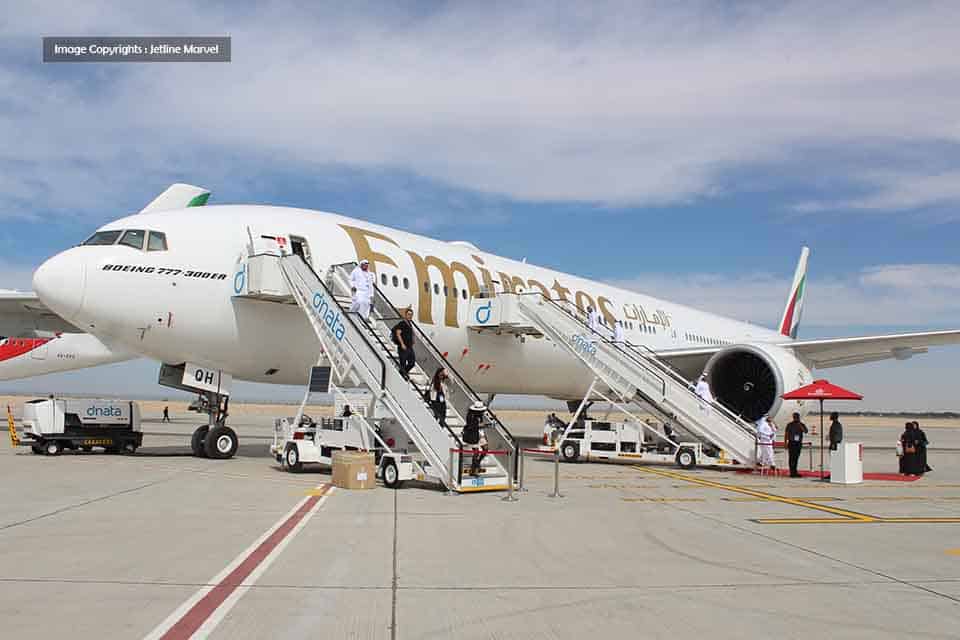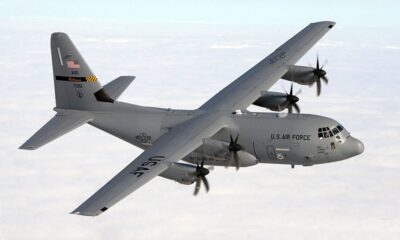Airlines
Emirates Ends 28-Year Singapore-Melbourne Fifth Freedom Route

Emirates is set to terminate its EK404/405 service between Melbourne and Singapore, marking the end of a route that has been operational since 1996.
The daily flights, which use Boeing 777-300ER aircraft, were briefly suspended during the COVID-19 pandemic but resumed in 2023. Emirates has yet to announce a final end date for this service, pending a final assessment from the Competition and Consumer Commission of Singapore (CCCS).
Despite this change, emirates airlines will continue to serve Melbourne with its daily flights to Dubai. The airline will maintain its extensive connectivity with Dubai, including four daily flights between Singapore and Dubai, and two daily non-stop flights between Melbourne and Dubai.
Passengers traveling between Singapore and Melbourne will still have options through Emirates’ codeshare partnership with Qantas, which offers twice-daily flights on this route. This arrangement allows Emirates to continue offering seats on Qantas-operated flights, ensuring that travelers have alternative options.
As noted by The Straits Times, Singapore Airlines and its low-cost subsidiary Scoot dominate the Melbourne-Singapore route, collectively holding approximately 57% of the market, emirates skywards while Emirates accounts for about 11%.
Emirates has stated that once the termination date is confirmed, it will communicate the changes to affected passengers and provide alternative travel arrangements.

Airlines
US DOT Approves Merger: Alaska Airlines & Hawaiian Airlines Finalize Deal

In a significant development for the aviation industry, the U.S. Department of Transportation (DOT) has issued an order granting an exemption for the transfer of international route authorities in the merger of Alaska Airlines and Hawaiian Airlines.
The merger, which is expected to be completed in the coming days, represents a major consolidation in the airline sector. Under the terms of the exemption, Alaska Airlines and Hawaiian Airlines are required to adhere to several key public-interest protections.
Emirates Rolls Out Refurbished Boeing 777s Across Six U.S. Destinations
These stipulations are aimed at preserving service quality and consumer benefits as the merger progresses. Specifically, the airlines must protect the value of rewards, maintain existing service levels on crucial Hawaiian routes to the continental U.S. and inter-island routes, and support rural services.
Additionally, they are required to ensure competitive access at the Honolulu hub airport, offer fee-free family seating, provide alternative compensation for controllable disruptions, and lower costs for military families.
This proactive approach by the DOT marks a new phase in the Department’s merger review process. For the first time, airlines are required to agree to binding, enforceable public-interest protections as a condition for closing their merger.
Japan Airlines Rolls Out Free Domestic Flights to International Passengers
This move highlights the DOT’s commitment to safeguarding public interests and ensuring that mergers do not undermine service quality or competition. As part of the merger agreement, Alaska Airlines will assume approximately $900 million in Hawaiian Airlines’ debt.
Despite this substantial financial responsibility, Alaska plans to retain Hawaiian as a separate brand, which will negate the need for repainting aircraft. To secure approval from the DOT, the airlines agreed to maintain current service levels on key routes where competition is limited.
The exemption granted by the DOT allows Alaska and Hawaiian to finalize their merger while remaining separate and independently operated until the Department completes its review of the transfer application. If the transfer is approved, the public-interest protections will remain in effect for six years.
-

 Travel2 months ago
Travel2 months agoAir India to Expand US Operations with Three New Routes After a Decade
-

 Aviation3 weeks ago
Aviation3 weeks agoNew EU Carry-On Rules Begin September 2024: What to Expect
-

 Aviation1 week ago
Aviation1 week agoBoeing confirms 797: A New Era for Mid-Size Aircraft
-

 Airlines2 months ago
Airlines2 months agoAir India Rolls Out A350s for Delhi-New York JFK and Newark Routes
-

 Travel2 months ago
Travel2 months agoWhy We Should Avoid These Stamps in a Passport
-

 Aviation1 week ago
Aviation1 week agoLockheed and Tata Team Up to Build C-130J MRO Facility in India
-

 Aviation1 month ago
Aviation1 month agoMeet WindRunner: The World’s Heaviest and Largest Aircraft Ever Built
-

 Airport2 months ago
Airport2 months agoTop 10 Largest Airports in the World by Size








You must be logged in to post a comment Login